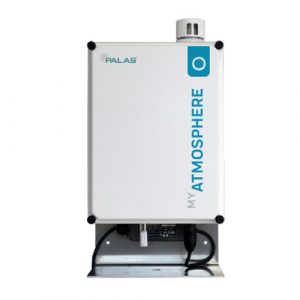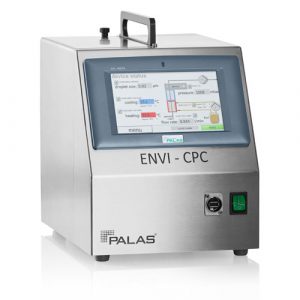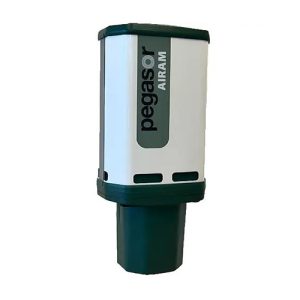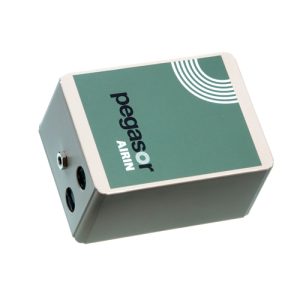Smoke Monitoring Equipment
Smoke Monitoring Equipment
Smoke from bush fires, controlled burning, home wood heaters, industrial processes and other sources can generate huge amounts of potentially dangerous particulates and being able to monitor these can prove very beneficial to health authorities and other organizations.
Alpha Scientific offers a broad range of portable and fixed monitoring solutions for measuring fine particles such as smoke, diesel particulates, welding fumes and other potentially dangerous aerosols. We are also very fortunate to represent some of the world’s most advanced particle instrument manufacturers such as Palas GmbH, giving us access to some amazing measurement instruments, capable of measuring fine aerosols down to 1 nm up to over 100um.
-

Palas AQ Guard Advanced Portable Aerosol Monitor
$0.00 -

Palas AQ Guard Smart 1000 Advanced Dust Monitor
$0.00 -

Palas AQ Guard Smart 1100 Advanced Dust Monitor
$0.00 -

Palas AQ Guard Smart 1200 Advanced Dust Monitor
$0.00 -

Palas AQ Guard Smart 2000 Ultra-Fine Particle Monitor
$0.00 -

Palas AQ Guard Smart Standard Dust Monitor
$0.00 -

Palas ENVI CPC 100 Condensation Particle Counter
$0.00 -

Palas ENVI CPC 200 Condensation Particle Counter
$0.00 -

Palas ENVI CPC 50 Condensation Particle Counter
$0.00 -

Palas Fidas Frog Portable High Resolution Dust Monitor
$0.00 -

Palas UF CPC 100 Condensation Particle Counter
$0.00 -

Palas UF CPC 200 Condensation Particle Counter
$0.00 -

Palas UF CPC 50 Condensation Particle Counter
$0.00 -

Pegasor Airam Fixed Ultrafine Particle Monitor
$0.00 -

Pegasor Airin Fixed Ultrafine Particle Monitor
$0.00


Combustible aerosols such as smoke from bushfires, wood heaters, burning off or other sources can not only be an irritant, but it can also potentially be dangerous to human health. Smoke monitoring and being able to measure the particle counts, particle size, particle mass and other key parameters relating to fine particles such as smoke can help organizations track down emission sources and or warn people as exposure levels approach certain threasholds.
Smoke Monitoring Applications
Smoke can come from a variety of sources, both natural and human-made. Some of the most common sources of smoke include:
Bush Fires
Bush Fires are one of the primary natural sources of smoke. They can occur naturally, such as from lightning strikes, or can be caused by human activity, such as from campfires, cigarettes, or fireworks.
Agricultural Burning
Agricultural burning, also known as crop burning, is a common practice in many parts of the world. It involves burning crop residue, such as straw or stubble, after a harvest. This can produce large amounts of smoke, which can cause air pollution and health problems.
Residential Wood Burning
Residential wood burning, such as from fireplaces, wood stoves, or outdoor fire pits, is a major human-made source of smoke. Wood smoke can contain harmful pollutants, such as particulate matter and VOCs, which can be hazardous to health.
Industrial Processes
Some industrial processes, such as waste incineration, metal smelting, and chemical manufacturing, can produce smoke as a byproduct. This smoke can contain a variety of pollutants, including heavy metals, dioxins, and sulfur dioxide, which can be harmful to human health.
Transportation
Vehicles, such as cars, trucks, and buses, can produce smoke from their exhausts. This smoke can contain pollutants such as nitrogen oxides, carbon monoxide, and particulate matter, which can be harmful to health.
Tobacco Smoke
Tobacco smoke from cigarettes, cigars, or pipes is a common source of smoke. It contains a variety of harmful chemicals, including carcinogens, which can cause cancer and other health problems.
Smoke particles can vary in size depending on the source of the smoke and the conditions under which it is produced. Generally, smoke particles range in size from 0.01 to 1 micron (micrometer) in diameter. However, some smoke particles can be as small as 0.001 microns or as large as 10 microns. The size of smoke particles is important because it affects how the smoke behaves in the atmosphere and how it interacts with other particles and gases.
Overall, smoke from any source can be harmful to human health and can contribute to air pollution. It is important to take steps to reduce smoke emissions and exposure to smoke whenever possible. Smoke monitoring systems and instruments are available and can be very useful tools.
